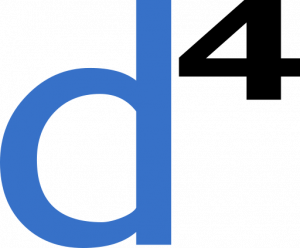Mastering cost management in data center deployments is not merely an operational consideration but a strategic imperative. As organizations increasingly rely on digital infrastructure to support their business objectives, the financial ramifications of deploying and maintaining high-performing data centers can be profound. Effective cost management can streamline operations, enhance service delivery, and ultimately contribute to an organization’s bottom line. IT managers and business executives can navigate this challenge with greater insight and foresight by understanding the complex interplay between various cost components and the broader economic landscape.

Several factors influence costs in data center deployments, including hardware acquisitions, software licenses, energy consumption, staff requirements, and ongoing maintenance expenses. Each decision made during the planning phase has downstream implications that affect overall expenditure. For instance, choosing scalable solutions may yield long-term savings but could require higher upfront investments. Similarly, the rapid evolution of technology means keeping pace with market trends can further complicate budgeting efforts. This article delves into essential strategies for evaluating costs effectively while highlighting optimization opportunities that align with immediate and future organizational goals. Understanding these dynamics prepares stakeholders to make informed decisions and provides a solid foundation for sustainable growth in an era where every dollar counts.
Understanding Data Center Cost Components
An effective grasp of the various cost components involved in data center deployments is essential for IT managers and business executives alike. The initial deployment costs typically encompass hardware, software, and infrastructure expenditures. For instance, a company may need to invest in high-performance servers, storage systems, networking equipment, and robust security mechanisms to ensure optimal functionality from the outset. Additionally, licensed software that efficiently manages these components can contribute significantly to the startup expenses. These initial outlays can add up quickly; depending on the specifications and scale of operations, organizations can expect to budget anywhere from thousands to millions of dollars.
Beyond the initial investment lies ongoing operational expenses crucial for maintaining a data center’s daily functionality. This category includes maintenance agreements for hardware repairs and software updates, utilities such as electricity for powering servers and cooling systems—often a significant part of the operating budget—and staffing costs associated with skilled personnel required to oversee operations. According to a report by the U.S. Department of Energy (DOE), energy consumption alone accounts for approximately 40% of total data center costs. Consequently, identifying avenues for improved energy efficiency can offer substantial savings over time while ensuring continuous performance quality.
Moreover, hidden costs frequently emerge during deployments that organizations must be prepared to address. These might include potential delays in project timelines leading to unforeseen labor charges or additional fees incurred if contingency plans must be implemented due to changes in regulations or unexpected challenges during installation. A study conducted by Gartner revealed that roughly 30% of IT budgets are often lost due to improperly managed projects where initially overlooked aspects become financial burdens later on. Effective management requires vigilance in assessing all facets of deployment expenditures—not just surface-level costs—to avoid overspending or financial pitfalls down the road.
In conclusion, understanding these multifaceted cost components—initial deployment investments, operational expenses, and hidden costs—is fundamental when planning a data center deployment strategy. By having clear visibility into expected and unexpected expenditures, organizations can make informed decisions that optimize their budget allocation while positioning themselves for future growth and success within an increasingly digital landscape.
Budgeting for Data Center Deployments
Developing a comprehensive budget for data center deployments is a critical step that sets the foundation for successful financial management. It requires an in-depth understanding of the project’s fixed and variable costs. A practical budgeting approach involves not only estimating initial expenditures—such as hardware, software, and installation—but also considers ongoing operational expenses like utilities, staffing, and maintenance. For instance, an organization planning to deploy a new server farm might start by researching current market prices for equipment and anticipating ancillary costs such as cooling solutions or power distribution systems. This thorough analysis allows IT managers to tailor the budget according to their specific needs while preparing to address potential cost fluctuations.
The importance of including contingency funds in a budget cannot be overstated. Unexpected expenses can arise during deployment due to various factors, such as hardware failures or unanticipated infrastructure upgrades prompted by regulations or evolving technology standards. Industry experts suggest allocating 10-15% of the total budget as a safety net for such contingencies. For example, if an organization earmarks $500,000 for deployment but reserves $75,000 as contingency funding, there would be flexibility to address unforeseen costs without jeopardizing core project objectives. Establishing this buffer will also provide stakeholders with greater confidence in the project’s overall financial stability.
Accurately estimating future growth and capacity requirements is another essential aspect of effective budgeting. As businesses expand or pivot their operations based on market demands, data centers must adapt to accommodate increased workloads efficiently. To achieve this foresight, IT managers should employ predictive analytics tools that analyze historical performance data along with current trends in technology usage and user behavior. By using these methodologies, organizations can forecast their requirements more effectively; for instance, anticipating a spike in demand during seasonal events or product launches can help in designing capacity plans that align closely with operational goals while minimizing overspending on unused resources.
Ultimately, mastering budgeting practices equips organizations with better control over their data center deployments while fostering financially responsible decision-making throughout the lifecycle of the deployment. A well-developed budget combined with proactive strategies ensures IT managers can effectively allocate resources in a manner that supports both current needs and future endeavors.
Evaluating Cost-Benefit Analysis
Conducting a cost-benefit analysis (CBA) is a fundamental step in the planning phase of data center deployments. A CBA helps stakeholders assess the financial viability of an investment by quantifying expected benefits and comparing them against likely costs. This evaluation not only highlights potential savings but also aids in making informed decisions that align with both organizational goals and budgetary constraints. For IT managers and business executives, failing to perform a thorough CBA can result in unforeseen expenses or underutilized resources that diminish the overall effectiveness of the deployment.
Several key metrics should be prioritized during the evaluation process when analyzing potential returns on investment (ROI). These include initial capital expenditures, projected operational costs over time, and anticipated revenue increases resulting from improved efficiency or service delivery. Additionally, non-financial factors such as enhanced customer satisfaction or compliance with regulatory standards may contribute to the project’s perceived value. Accurately forecasting these elements ensures a comprehensive understanding of both tangible and intangible benefits, empowering organizations to make strategically sound choices.
To illustrate the significance of effective cost-benefit analyses, consider a case study involving a mid-sized enterprise that decided to upgrade its data center infrastructure for greater scalability. The company conducted an extensive CBA prior to implementation, focusing on metrics like downtime reduction, performance enhancement, and energy savings. Their analysis revealed that upgrading their existing systems could yield approximately $600,000 in annual savings primarily through reduced energy consumption and lower maintenance costs compared to continuing with outdated equipment. As a result of this assessment, management confidently proceeded with the investment, which ultimately led to increased operational effectiveness and long-term financial gains.
In summary, evaluating cost-benefit analyses before deploying any data center initiative is essential for ensuring economical resource allocation. By carefully considering relevant metrics and employing real-world examples as guidance—such as companies successfully navigating transitions through well-planned CBAs—IT managers can effectively demonstrate fiscal prudence while meeting their organization’s technological needs.
Identifying Cost-Saving Opportunities
Identifying cost-saving opportunities in data center deployments is essential for maximizing efficiency and minimizing expenditures. One effective technique is optimizing resource allocation, which ensures that every aspect of the operation is utilized to its full potential. For instance, employing virtualization technology can help organizations minimize hardware costs by allowing multiple virtual servers to run on a single physical server. This consolidation reduces capital expenditure and lowers energy consumption, leading to substantial operational savings over time.
Negotiating with vendors is another strategic approach to uncovering cost-saving opportunities. IT managers should be proactive in discussing pricing structures, payment terms, and service level agreements (SLAs) with suppliers. For example, bulk purchasing discounts or loyalty programs can lead to significant financial benefits. In addition, forming partnerships rather than transactional relationships can foster goodwill and create avenues for better pricing models or tailored solutions that meet specific business requirements.
Technology advancements also play a pivotal role in driving down long-term operational costs. With the advent of energy-efficient cooling systems and AI-driven workload management tools, data centers are increasingly able to reduce their environmental footprint while simultaneously cutting costs. For instance, implementing advanced data analytics software allows organizations to assess workload patterns and optimize energy usage accordingly. As reported by the U.S. Department of Energy, companies that adopt such technologies have cut their electricity costs by as much as 30%, showcasing how technological investments can yield substantial returns.
Incorporating these strategies into a comprehensive cost management plan ensures that organizations do not merely react to rising expenses but proactively manage them from the outset of their data center deployments. By focusing on optimizing resource allocation, negotiating effectively with vendors, and leveraging new technologies, IT professionals can substantially lower their total cost of ownership (TCO) while enhancing overall operational efficiency.
Implementing Effective Monitoring Strategies
Effective monitoring strategies are crucial for tracking data center expenditures over time and ensuring that budgets remain aligned with operational goals. Numerous tools and methodologies exist to facilitate this process, ranging from advanced software solutions that provide real-time analytics to integrated financial management systems capable of forecasting expenses based on historical data. For instance, utilizing cloud cost management platforms such as CloudHealth or Spot.io allows IT managers to gather insights into cloud usage, enabling them to make informed decisions regarding resource allocation while also identifying patterns that could highlight inefficiencies in spending.
Establishing key performance indicators (KPIs) related to cost efficiency is vital for measuring the effectiveness of cost management efforts within data centers. KPIs can include metrics such as Power Usage Effectiveness (PUE), which assesses energy efficiency concerning computational output, or Cost per Transaction, which evaluates operating costs relative to specific workloads. By consistently tracking these indicators, organizations can gain visibility into their financial performance, facilitating proactive adjustments to enhance profitability without sacrificing service quality.
Furthermore, regular audits serve as a powerful mechanism for uncovering discrepancies and areas ripe for savings. An internal audit may reveal overlooked subscriptions or services being underutilized; for example, a recent study by Gartner indicated that companies regularly find up to 30% of cloud spend does not align with their actual usage needs. Conducting periodic reviews encourages accountability and can foster a culture of financial discipline across teams responsible for data center operations. Implementing a routine audit schedule helps identify waste and confirms compliance with budgetary constraints and strategic goals—ultimately leading organizations toward more sustainable financial practices in their data center deployments.
In summary, combining robust monitoring tools with clearly defined KPIs and regular auditing processes positions IT managers and business executives to maintain rigorous control over expenditures in their data centers. This triad of strategies forms the backbone of effective cost-management efforts while promoting a keen awareness of ongoing opportunities for optimization within an organization’s technology infrastructure.
Managing Energy Efficiency
Energy consumption is a significant factor that impacts the overall operational costs of data centers, often accounting for a substantial portion of total expenses. According to the U.S. Environmental Protection Agency (EPA), data centers use approximately 2% of the nation’s total energy consumption. This figure underscores the imperative for IT managers and finance professionals to prioritize energy efficiency as a central aspect of cost management in their deployments. Reducing energy usage lowers utility bills and mitigates the environmental impact associated with high energy consumption, creating a compelling case for organizations to pursue sustainable operational practices.
Implementing energy-efficient technologies is one of the most effective strategies for managing energy consumption in data centers. Techniques such as virtualization enable organizations to maximize server utilization, minimizing the number of physical machines required. Additionally, using advanced cooling systems and thermal management practices can significantly reduce reliance on traditional air conditioning units. For instance, Google’s data centers utilize evaporative cooling methods, which have proven to be more economical than conventional methods by reducing electricity usage by up to 30%. These technology-driven solutions exemplify how targeted investments can yield both immediate cost savings and long-term financial benefits.
Moreover, the long-term advantages of investing in sustainable solutions substantiate their value beyond mere cost savings. Transitioning towards renewable energy sources—such as solar or wind power—can help shield organizations from fluctuations in traditional energy prices while contributing positively to corporate social responsibility goals. In fact, many leading tech companies are committing to 100% renewable energy targets. By adopting such initiatives, businesses not only enhance their brand reputation but also prepare themselves for future regulatory pressures related to sustainability practices.
In conclusion, managing energy efficiency is integral to mastering cost management in data center deployments. By recognizing the impact of energy consumption on operational costs and implementing innovative solutions to reduce them, organizations can achieve both economic and ecological objectives. As sustainability continues to grow in importance across industries, investing in energy-efficient technologies will likely become an essential component of a successful business strategy moving forward.
Planning for Scalability
In the context of data center deployments, planning for scalability is crucial to ensuring that the infrastructure can adapt to changing business requirements without incurring excessive costs. As organizations grow, their data needs expand, requiring them to rethink their initial design and capacity plans. Properly incorporating scalability considerations from the onset allows IT managers and business executives to create a framework that supports both current operations and future expansions, potentially avoiding costly redeployments or hardware overhauls later on.
One significant financial consideration in planning for scalability is the choice between upgrading existing resources versus investing in new infrastructure. Scaling up existing systems typically presents a more budget-friendly option when compared to deploying additional servers or storage devices. However, this approach may lead to limitations related to performance and redundancy if not carefully managed. For instance, an organization might face diminishing returns as it looks to maximize the capabilities of aging hardware that cannot support the same performance levels as contemporary solutions. Thus, a thorough analysis of resource utilization rates is essential before making any scaling decisions.
To ensure flexibility within budgets as needs evolve, companies should implement strategies like modular architecture in their data centers. This approach allows organizations to add capacity incrementally without disrupting ongoing operations or committing extensive resources at once. For example, a company using cloud-based services could leverage burst capacity during peak times instead of investing heavily in permanent infrastructure that remains under-utilized during standard operating hours. Additionally, establishing clear communication channels among stakeholders can facilitate timely decision-making regarding budget adjustments or strategic reallocations of funds toward necessary technology upgrades.
Effective budgeting for scalability necessitates foresight in anticipating demand changes while leveraging flexible solutions aligned with organizational goals. The ability to pivot quickly based on operational needs will not only enhance cost management but will also position companies favorably within an increasingly competitive landscape where agility is vital to success.
Conclusion: Embracing Effective Cost Management in Data Centers
In conclusion, mastering cost management in data center deployments is about minimizing expenses and strategically planning for the future. Throughout this article, we explored the multifaceted components of costs associated with data centers, from initial deployment and operational expenses to various hidden fees that could arise. IT managers can better navigate the complexities of managing a data center’s financial landscape by understanding these cost elements and implementing a robust budgeting strategy that includes contingency funds.
Moreover, it is crucial to recognize that effective cost management is ongoing throughout the deployment lifecycle. Regular monitoring, evaluation of energy efficiency measures, and strategic scalability planning should be integral parts of a continuous improvement approach. By committing to these practices and remaining vigilant against potential overspending while seeking out optimization opportunities, organizations can enhance their return on investment and ensure sustainable long-term success. Ultimately, achieving mastery over cost management empowers decision-makers to effectively align their financial goals with technological advancements.







